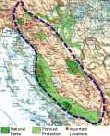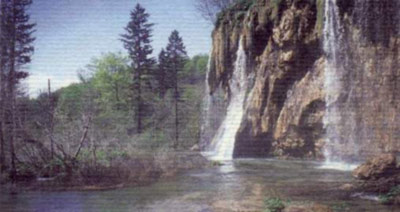|
Social and economic strategies have become increasingly
prominent in biodiversity planning. However, many of
these approaches are new to conservationists and there
is little experience in applying them to the sustainable
use and conservation of biodiversity.
Economic incentives
Economic biodiversity incentives should make biodiversity
an asset rather than a liability to concerned agents.
They aim to increase returns on activities that conserve
or restore valuable biological habitats as well as increasing
the cost or lowering the return to activities that damage
habitat.
Economic incentives comprise of a subset of all possible
incentives for biodiversity conservation. Economic incentives
tend to use market mechanisms to influence decision
making. The focus is directly or indirectly on prices.
There are few types of economic incentives:
- Positive incentives: any monetary (direct
payments, cost sharing, tax advantages) or non monetary
(such as recognition and awards for outstanding performance)
inducement, which incites or motivates governments,
local people, and international organisations to conserve
biodiversity.
- Disincentives: any mechanism that internalises
the cost of use and/or damage to biological resources
in order to discourage activities that deplete biodiversity.
- Indirect incentives: any mechanism that creates
or improves upon markets and price signals for biological
resources encouraging the conservation and sustainable
use of biodi-versity.
- Perverse incentives: an incentive which induces
behaviour leading to the reduction in biodiversity.
Perverse incentives are the result of government intervention
failure. Most "perverse" incentives are designed to
achieve other policy objectives and the perversity
is thus an external factor, or an un-anticipated side
effect of the policy.
Examples of economic strategies are:
Social strategies
Two important types of social strategies are:
- the
use of indigenous knowledge; and
- strategies
for local participation.
|
Example: Karst Ecosystem Conservation (KEC) - Croatia
The Karst Ecosystems Conservation  (KEC)
project aims to protect biological and landscape diversity
of karst ecosystems in Croatia, taking into account
the needs of the local population. KEC is being prepared
on the basis of the National Strategy and Action Plan
for Biodiversity Protection, and in line with Croatia's
socio-economic goals. In December 2001, the Global Environment
Facility (GEF) granted 5.07 million USD for the Karst
Ecosystems Conservation project, while the contribution
of the Republic of Croatia corresponded to an equivalent
of 3.30 million USD. (KEC)
project aims to protect biological and landscape diversity
of karst ecosystems in Croatia, taking into account
the needs of the local population. KEC is being prepared
on the basis of the National Strategy and Action Plan
for Biodiversity Protection, and in line with Croatia's
socio-economic goals. In December 2001, the Global Environment
Facility (GEF) granted 5.07 million USD for the Karst
Ecosystems Conservation project, while the contribution
of the Republic of Croatia corresponded to an equivalent
of 3.30 million USD.
Project preparation was completed by the end of 2000.
The project will be implemented over five years, with
grant funds being available by the end of 2007. During
the project preparation, basic studies on social and
rural development, biodiversity, legal and institutional
frameworks for the protection of biodiversity, land-use
plans and natural resources management plans, and studies
on the public opinion, education and public participation,
have been expanded. The concept and formulation of the
project have been performed through a number of workshops
organised at local and national levels.

Project funds will be allocated for carrying out of
the following components:
- strengthening the national capacity to ensure biodiversity
conservation and support of the natural resource management;
- establishing community-based mechanisms for biodiversity
conservation and sustainable resource use in the karst
region; and
- project management and monitoring.
In order to provide incentives to include the local
population in the biodiversity conservation, small grants
will be given out in the area. Private entrepreneurs,
NGOs and institutions in the region will be able to
apply for 2,000, 10,000 or 25,000 USD in grants for
traditional activities and crafts, which contribute
to biodiversity conservation and help reduce environmental
pressures.
|